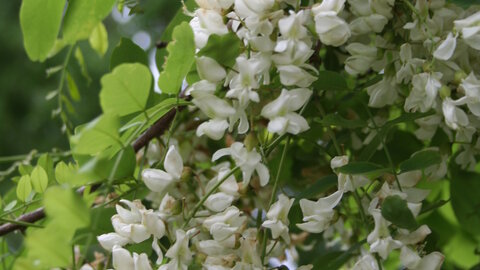Robinia pseudoacacia
,
Deciduous
Black locust is one of the most adaptable and easy-to-grow trees
for the urban landscape. Due to its showy aromatic flower, it has often been planted as an ornamental, but this practice should be
discouraged due to the potential for spread by root suckers.

Where To Grow
Although native only to the southeastern US, its aggressiveness has allowed it to naturalize throughout much of the Midwest, including
areas of eastern Nebraska. Because the tree’s roots can fix nitrogen (thanks to a symbiotic bacteria) it can grow on very poor and
inorganic soils and is often used to stabilize slopes and waste areas.
Suitable to plant throughout the state.
Size at Maturity
Tree Height
Tree Spread
30-40'
20-30'
Wildlife Benefits
The tree is a favorite of bees and is said to produce one of the
best tasting kinds of honey. However, it has little other wildlife value.
Additional Considerations
Unfortunately, the tree is very prone to attack from the locust
borer and as such seldom lives more than a few decades in the landscape. The hybrid cultivar ‘Purple Robe’ has striking, nearly purple
flowers but is a borer magnet and destined to a very short life. It can also be a weedy tree with a suckering habit and a tendency to take
over open ground.
Interesting Facts
The wood of black locust is very hard and durable making it
desirable for fence posts and furniture, as well as firewood.

